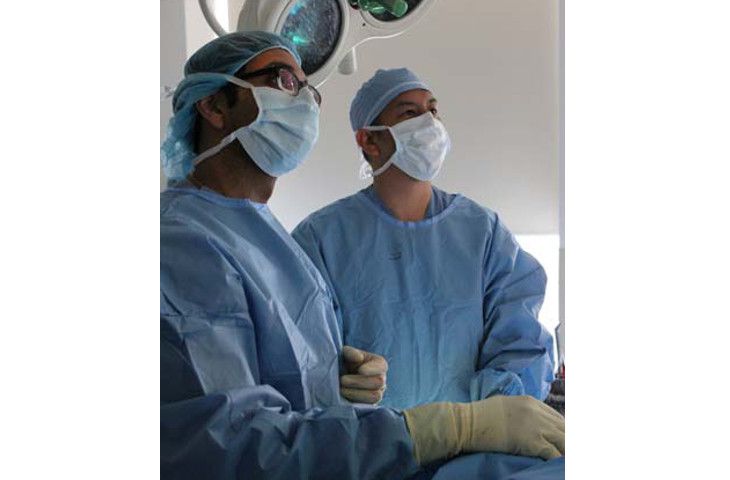Ulnar Collateral Ligament Reconstruction (Tommy John Procedure)
A surgical procedure performed to replace a torn or incompetent ulnar collateral ligament (UCL) of the elbow. An incision is made along the middle side of the elbow and a careful dissection is carried out to expose the UCL and its attachment sites. A tunnel is drilled at the ulnar attachment site and the graft is introduced into the tunnel. It is secured in place using an absorbable screw. Next the humeral attachment site is identified and a tunnel is drilled. The free end of the graft is passed through the tunnel. Once the graft is appropriately tightened it is secured on the humerus side with an absorbable anchor. Any intact native UCL can be sutured to the graft to reinforce the graft and promote healing.

Contents
Featured in Arthroscopy Techniques
Dr. Chen and his colleagues have published a peer-reviewed article about Tommy John Ligament Repair in Arthroscopy Techniques, the Journal of Arthroscopic and Related Surgery Techniques.
Tommy John Ligament Repair with Ulnar Collateral Ligament Internal Brace
Common Questions About Ulnar Collateral Ligament Reconstruction (Tommy John Procedure)
How is an ulnar collateral ligament reconstruction (Tommy John Procedure) performed?
First, a graft is harvested. An incision is made in the elbow and the UCL is exposed. Damaged tissue is removed and tunnels are drilled in the humerus and ulna. The graft is passed through these tunnels and secured with an absorbable anchor.
Where do grafts for an ulnar collateral ligament reconstruction come from?
The most common grafts are autografts taken from the Palmaris longus tendon of the forearm, hamstring tendon, or big toe extensor tendon. An allograft may also be used as well.
How long does a Tommy John Procedure take?
An Ulnar Collateral Ligament Reconstruction, or Tommy John Procedure, usually takes 60-90 minutes to perform.
Surgical Technique and Education Videos
Some videos are age-restricted. You may need to log in to YouTube in order to view these videos.










